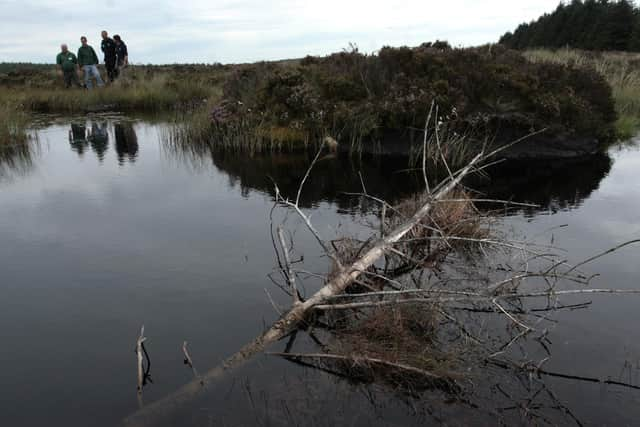Climate change threatening Britain’s ancient treasure as peat bogs dry out
As changing weather patterns continue to dry out peatlands, the still-buried artefacts they contain could also be destroyed, according to Dr Andrew Birley, Dr Gillian Taylor of Teesside University and Dr Rosie Everett of Northumbria University.
Due to peat soil containing very little oxygen, organic materials like wood, leather, textiles and even, in some cases, human flesh do not rot.
Thus items from the long-ago past can still be unearthed.


Advertisement
Hide AdAdvertisement
Hide AdThe most famous of which was the Lindow Man, a preserved body of a man believed to be from the Iron Age that was discovered in a peat bog in Cheshire, North West England in 1984 by professional peat cutters.
Even the man’s internal organs were so well preserved that investigators were able to determine his last meal.
In a BBC report, Dr Birley, the chief archaeologist at Magna, a Roman fort alongside Hadrian’s Wall, said the “desiccation” from climate change had already begun at the site.
Dr Birley said: “Pretty much everything the Romans used here for 300 or 400 years could have been preserved in more or less the same state it was thrown away, which is an incredible opportunity.
“If we lose places like this, we lose that direct connection to the people who lived in this island 2,000 years ago.
“We lose the chance to learn as much as we can about them.
“And we lose part of our own heritage and part of our own history.”
Fellow archaeologist Dr Taylor added that if the peat dries out at these sites it would be “catastrophic” for any organic artefacts, telling the BBC: “We will lose our heritage if we don’t look at what’s occurring now.”
Peatlands is a key carbon store – the largest in the UK – and extracting peat for use in horticulture releases carbon emissions, as well as damaging key wildlife habitats, and reducing the landscape’s ability to absorb water and curb flooding.
Advertisement
Hide AdAdvertisement
Hide AdUnder new proposals, the sale of compost containing peat would be phased out in the amateur horticulture sector in England and Wales by the end of this Parliament, to cut carbon emissions and conserve wildlife habitats.
